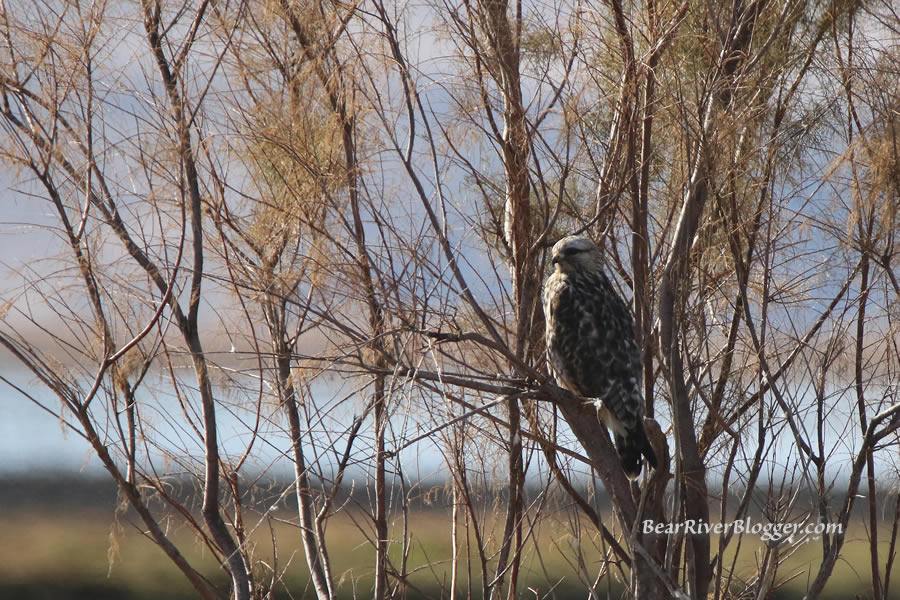For us bird watchers, finding the first of the year of any species is a special moment. Personally, I am the most excited when I find the first of the year birds for long range migratory species, such the tundra swan and rough-legged hawk.
The rough-legged hawk is a winter resident on the Bear River Migratory Bird Refuge and the tundra swan passes through the refuge during both spring and fall migration. Both are bird species I specifically visit the refuge for to find and and photograph each year.
A few nights ago, sometime around midnight or so, I was excited to hear whoots from the first of the year tundra swans flying overhead, most likely heading to the Bear River Migratory Bird Refuge. Today, with just as much excitement, I was treated to see my first of the year rough-legged hawk perched in a small tree on the bird refuge auto tour route.

Rough-legged hawks are known to breed in the far northern reaches of the arctic tundra. They travel thousands of miles each fall to come to the refuge here in Northern Utah to feed on a bounty of mice and voles.
Finding the rough-legged hawk is fairly easy once winter has arrived. It seems the colder it is the more one is likely to find the rough-legged hawk on the refuge.
It is still mid fall here and still fairly warm so I am kind of surprised to start seeing these hawks now but it won’t be long before winter sets in and the best time to observe the rough-legged hawk begins.
So far I have only seen one individual bird on the refuge. It was located on the northern portion of the auto tour route near the first large gravel parking.
Once more birds show up they are commonly found on the lower portion of forest street, perched on the large metal road signs, as well as on many parts of the self-guided tour loop.
I will admit I am not a fan of winter but it does bring some great bird watching opportunities on the Bear River Migratory Bird Refuge, with the rough-legged hawks being one of the exciting birds to find each year.
Other birds I usually find during the dead of winter on the refuge are bald eagles, falcons, barn owls and even a few dedicated great blue herons perching along any small pocket of open water.


